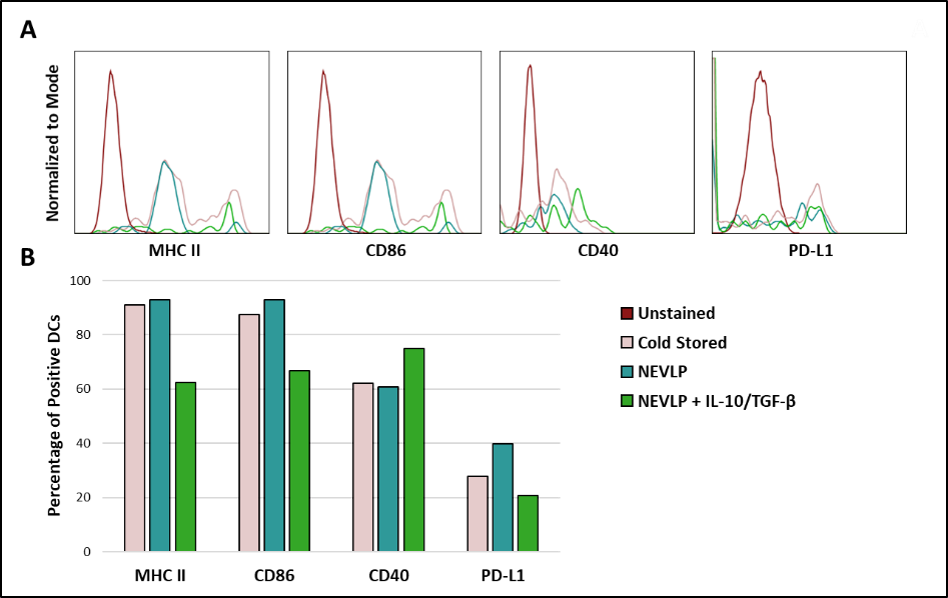Immunomodulation During Normothermic Ex Vivo Machine Perfusion of the Rat Liver
1Surgery, University of Wisconsin, Madison, WI, 2Pediatrics, University of Wisconsin School of Medicine and Public Health, Madison, WI
Meeting: 2020 American Transplant Congress
Abstract number: A-331
Keywords: Immunogenicity, Liver, Lymphocyte activation, Machine preservation
Session Information
Session Name: Poster Session A: Biomarker Discovery and Immune Modulation
Session Type: Poster Session
Date: Saturday, May 30, 2020
Session Time: 3:15pm-4:00pm
 Presentation Time: 3:30pm-4:00pm
Presentation Time: 3:30pm-4:00pm
Location: Virtual
*Purpose: Transplantation is the best treatment option for end-stage liver failure. There remains a critical need to develop targeted therapeutic strategies to decrease graft rejection without global immunosuppression. Dendritic cells (DC) polarized to a regulatory phenotype (DCreg) are an attractive candidate for therapy as they can prolong graft survival; however, they are difficult to generate in vitro. The novel organ storage method normothermic ex vivo liver perfusion (NEVLP) could allow the generation of DCregs in the donor organ itself before transplantation, with the potential to create a regulatory immune environment in the donor liver before transplantation that enhances graft acceptance.
*Methods: Lewis rats were divided into three groups: cold storage at 4°C (CS), NEVLP at 37°C, and NEVLP at 37°C with anti-inflammatory cytokine additives (IL-10 and TGF-β). After 4 hours of CS or NEVLP, livers were re-perfused at 37°C for two hours to simulate transplantation. Liver resident DCs were then isolated. Multi-color flow cytometric analysis of DC MHC II and costimulatory molecules was performed to elucidate phenotypic effects of NEVLP. Immune response after NEVLP was assessed with allogeneic mixed lymphocyte reaction (MLR) with allogeneic Brown Norway responder cells.
*Results: NEVLP combined with IL-10 and TGF-β induced the lowest levels of the DC activation markers MHC II and CD86 in comparison to the CS and NEVLP without cytokines groups (Fig. 1). However, CD40 increased in the NEVLP combined with IL-10 and TGF-β. PD-L1 expression was similar accross all groups. MLR from an NEVLP combined with IL-10 and TGF-β showed less than two-fold induction of lymphocyte proliferation in comparison to unstimulated control cells.
*Conclusions: The addition of IL-10 and TGF-β during NEVLP maintains DCs in a regulatory phenotype, associated with decreased responder proliferation in allogeneic MLR. Combining cytokines with NEVLP may be a strategy by which to induce a regulatory environment in the donor liver and decrease the need for immunosuppressive agents in the recipient.
Figure 1. NEVLP with IL-10 and TGF-β attenuates dendrictic cell activation. A. Multi-color flow cytometric analysis on cold stored and perfused livers demonstrating expression of cell surface markers on DCs. B. DCs isolated after NEVLP with IL-10 and TGF-β cytokine additives demonstrated a lower percentage of cells positive for activation markers MHC II and CD86 than in CS and NEVLP conditions.
To cite this abstract in AMA style:
Carlson K, Najmabadi F, Pavan-Guimaraes J, Burlingham WJ, Capitini CM, Al-Adra DP. Immunomodulation During Normothermic Ex Vivo Machine Perfusion of the Rat Liver [abstract]. Am J Transplant. 2020; 20 (suppl 3). https://atcmeetingabstracts.com/abstract/immunomodulation-during-normothermic-ex-vivo-machine-perfusion-of-the-rat-liver/. Accessed December 10, 2025.« Back to 2020 American Transplant Congress

